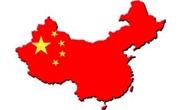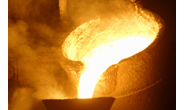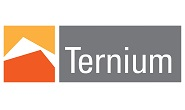International Steel Mills

China Steel Industry in “Indiscriminate Self Destruction” Mode
Written by John Packard
December 8, 2013
In the first half of 2013 the profit on one ton of steel sold in China was only 0.43 Yuan. At that rate, it took the sale of two tons to earn just enough money to buy an ice cream bar or Popsicle. A far cry from peak profits of 1000 Yuan per ton. The Chinese steel industry has slipped from “self-esteemed and rich” to “self-depreciated and poor” over the last several years.
Overcapacity is one of the main culprits in the difficulties facing steelmakers. In 2009, Chinese steel capacity was about 700 million tons but by 2013 it had soared to 976 million tons. Oversupply led to a downward spiral of pricing and profit.
In 2013, environmental issues took center stage in China. As the largest contributor to air pollutant emissions, tighter regulations for steel mills ensued. The costs to comply, however, were untenable for mills suffering from already damaged profit margins. It is estimated environmental costs to produce one ton of steel is around 100 Yuan. For an industry producing 720 million tons of steel annually that comes to 72 billion Yuan per year.
In an effort to boost profits, mills diversified adding iron mining to their business portfolio. Some mills followed the example of Wuhan Iron and Steel Corporation (WISCO) and invested in pig raising ventures. Others diversified even further to wine brewing and selling bottled water. Whether these efforts will increase profits for beleaguered steel mills has yet to be seen.
The China steel price index is calculated using 1994 prices as the base price of 100. “At the end of October, the steel price index was below 100 for 11 weeks,” said CISA Vice Chairman Zhang Changfu. The serious overcapacity in the China steel industry has resulted in a capacity utilization rate of 72 percent, far below the acceptable range.
In 2014 steel mills in China will face strict capacity restrictions. With steel growth higher than steel demand in China is estimated 2013 capacity will reach 1 billion tons with 200 million tons of excess capacity. Xiang Songzuo, chief economist at the Agricultural Bank of China, called the situation “indiscriminate mass destruction.”
In October 2013, the State Council attacked overcapacity head-on directing the steel industry to reduce capacity by 80 million tons. The province of Hebei produces 180 million tons of crude steel, about one fourth of the total national production. The province’s steel production capacity will be cut by 60 million tons over the next five years with another 20 million tons of reduction by 2020. The reduction will be accomplished through mergers, increased steel exports and closure of mills.
It is hopeful that if production cuts can be accomplished in Hebei, it will lead to a controlled and profitable steel industry. On November 24 mills began coming down with the dismantling of 8 steelmakers and 16 converters for reduction of 4.56 million of iron making capacity and 6.8 million tons of steel production capacity.
Overcapacity is only part of the government‘s concern, however. The 10 cities with the worst air pollution were found to be those with steel intensive industries such as Hebei, Tangshan, Handan, Shijiazhuang, Xingtai, and Baoding.
Earlier efforts to regulate steel mill industry emission were frustrated by lack of air quality standards, shoddy (or lack of) installation of environmental equipment and intermittent operation of that equipment. Metallurgy industry planning research director Li Xin admits it will be difficult to get the steel industry to comply with environmental policy; corporate profits are down and the State does not provide any subsidies to help with environmental compliance costs. There is also concern that mills are not treated equally and environmentally friendly plants suffer lower margins.
Lower margins have caused a $3 trillion “steel kiss of death” for the industry. By the end of June, 86 steel companies averaged 34.88 billion of debt each. CISA reported October profits dropped by 47.66 percent reversing earlier gains in the year. In the first three quarters of the year, 86 key steel enterprises accumulated profit of 11.3 billion Yuan but their average net sales rate of 0.41 percent was the lowest level in the industry. In the first half of the year that figure dropped temporarily to 0.13 percent.
In addition, in the first half of 2013 total assets debt ratio reached 69.47 percent, a high ratio that looks even worse when broken down by mills. Of the key steel producers, 39 mills had debts to assets ratios of more than 80 percent, 15 mills were over 90 percent, and five steel enterprises had a debts to assets ratio of more than 100%. In late September the total asset-liability ratio number increased to 69.63 percent, reaching a 10 year record high.
The steel trading business has suffered along with the mills. The following metaphor was used to emphasize what happens to traders when mills crash.
In the steel industry we have such a Saying: When Mills eat meat, the Steel Traders get the bones, When the Mills gnaw the bones, Steel Traders drink the soup, When Mills drink the soup, Steel Traders can barely breath, When Mills can barely breath, Steel Traders are spitting blood.
Chinese investment in oversea iron ore interests is expected to bring relief to mills that are tied to the world’s three giant iron ore producers for their raw material. Iron ore output from Chinese steelmakers who have interests overseas is expected to reach 150 million tons in 2015. Iron ore pricing has remained high while steel prices declined in recent years. Having control over source material is expected to moderate pricing for China mills.
But in any case, whether it is a black cat or a white cat that catches the mice, it is still a good cat. For Steel Mills, in the face of growing and difficult predictions at the moment and how long the reshuffling will take, and only trying to survive to be able to say in the end, “The last ones left standing are Kings. (Source: The preceding is a paraphrasing of an English translation of an article published in Securities Journal on 12-23-2013)

John Packard
Read more from John PackardLatest in International Steel Mills

Global steel mill output steady through May
Global raw steel production rose 2% from April to May, slightly above average production levels seen in recent months, according to data recently released by the World Steel Association (worldsteel).

Trump says US government to control 51% share in USS
President Trump says the US government will hold a 51% stake in U.S. Steel after the Nippon deal.

USS, Nippon Steel quiet as litigation deadline approaches
There has been little word from U.S. Steel, Nippon Steel, or the White House since President Trump endorsed the companies’ “partnership” on social media and celebrated it at the May 30 rally outside Pittsburgh.

Ternium’s Vedoya named AIST’s Steelmaker of the Year
Maximo Vedoya was awarded in recognition of Ternium’s expansion project in Pesquería, Mexico, and Ternium’s efforts to decarbonize steelmaking.

CRU: Baosteel hints at output cuts in China
Baosteel exec comments on market rumors of 50 million tons of output being cut this year, less than 0.5% of the 1 billion tons-plus China has produced annually in recent years.
